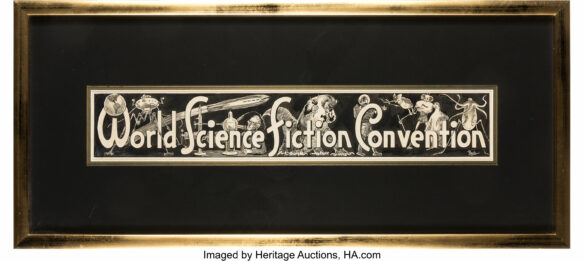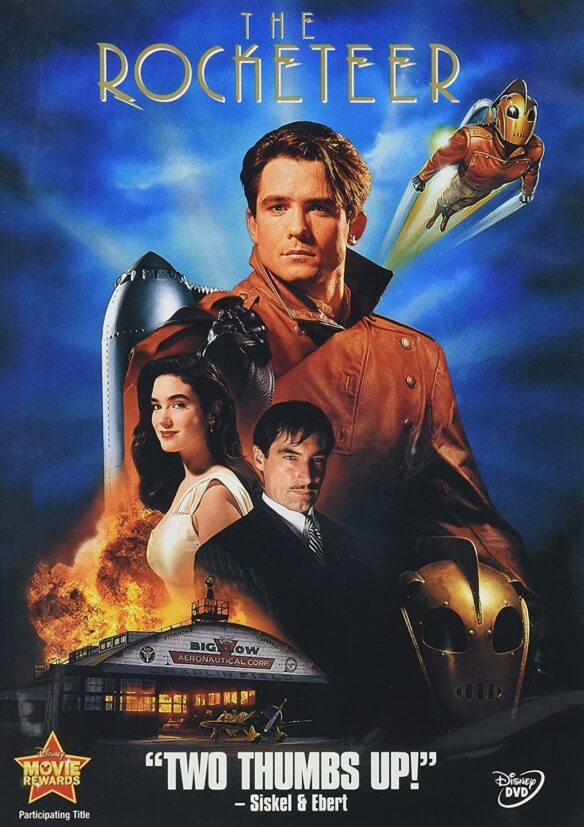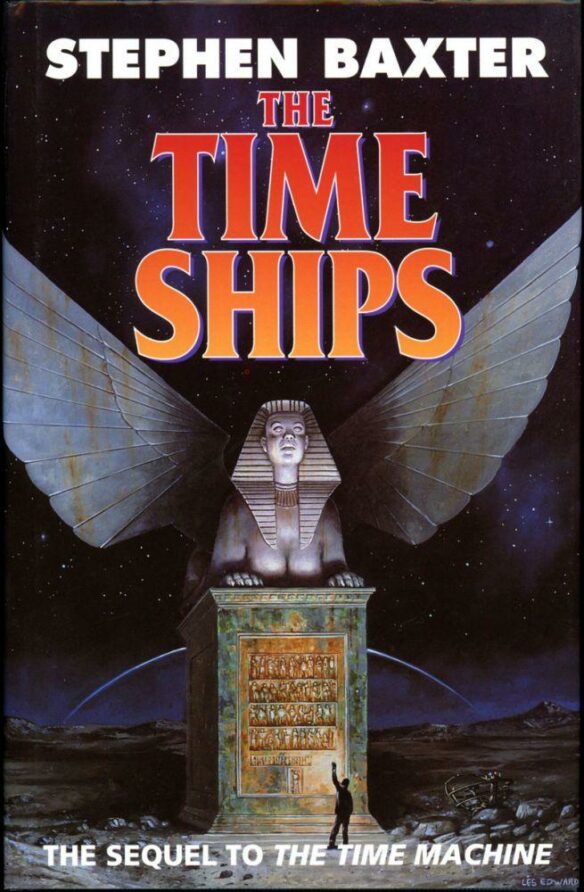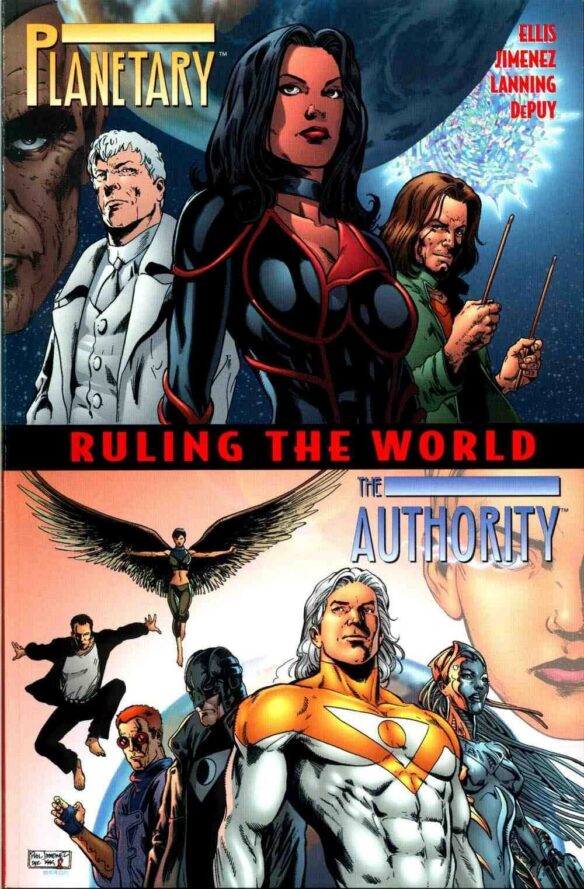(1) WOOKIEEPEDIA IS TARGET OF HARASSMENT. ScreenRant tells why “Wookieepedia Under Fire For Changing Ki-Adi-Mundi’s Birth Date After The Acolyte”.
Wookipedia, the official Star Wars wiki, has come under fire after making an edit to Ki-Adi-Mundi’s canon page based on The Acolyte. Jedi Master Ki-Adi-Mundi is hardly the most famous character in the Star Wars franchise; the Cerean Jedi has only a handful of lines, and his most notable moment in canon was ordering a flavorless slushie in John Jackson Miller’s tremendous book The Living Force. But Ki-Adi-Mundi’s cameo in The Acolyte has turned into a source of controversy based on his date of birth.
Wookipedia, the official Star Wars wiki, updated its page on Ki-Adi-Mundi to reflect the fact he’s canonically alive during The Acolyte, 100 years before Star Wars: Episode I – The Phantom Menace. The editors on the site were shocked at the strength of the backlash, with some even receiving death threats….
… Ki-Adi-Mundi‘s age was previously established in only two sources: a 1999 CD-ROM released after Star Wars: Episode I – The Phantom Menace and a 2013 trading card. George Lucas himself contradicted some of the contents of the CD-ROM when he changed Ki-Adi-Mundi’s lightsaber color in later movies, and both were rendered non-canon by Disney in 2014. In canon, Ki-Adi-Mundi’s age has never been specified.
The problem is less with the change of canon than the current backlash against The Acolyte, which has even seen a review-bombing campaign on Rotten Tomatoes. Wookipedia is simply the latest target; all the site’s editors have actually done is update the information on the canon character page, but that simple act has unfortunately received a backlash. Some trolls have taken to sharing images of Ki-Adi-Mundi’s Legends page, carefully edited to remove the “Legends” banner – which certainly illustrates that this whole debate isn’t in good faith.
(2) EXPENSIVE RELIC OF FIRST WORLDCON. Frank R. Paul’s artwork for the first Worldcon program book (1939) was sold for $10,200 today by Heritage Auctions.

Frank R. Paul World Science Fiction Convention – Nycon Program Book Illustration Original Art (Nycon, 1939). From the first ever World Science Fiction Convention (aka Worldcon) in 1939! And the art is by noted sci-fi artist Frank R. Paul, which makes this doubly desirable! The original art for this program banner was created in ink and signed in the lower right of the 20.5″ x 3.25″ image area. UV Glass-front framed to 29″ x 12.75″. Lightly toned, with some minor whiteout art clean-ups. In Very Good condition. From the Roger Hill Collection.
(3) PUBLISHING PENDULUM SWINGING? Book Riot’s Jeff O’Neal asks the question “Has the DEI Backlash Come for Publishing?” and looks for the answer in The Atlantic:
Dan Sinykin and Richard Jean So have some fascinating data in The Atlantic. In looking at the racial breakdown of more than 1700 novels published by major publishers in the last five years (2019 – 2023), Sinykin and So found that the percentage by nonwhite writers doubled, from a meager 8% in 2019 to a better, though still well short of U.S. demographics, 16% in 2023. This is tremendous progress and, anecdotally, feels about right. The framing of the piece is in the context of Lisa Lucas’ firing from Pantheon, which is both relevant as the sharp rise roughly corresponds with the environment Lucas was hired in. And they are right, as is anyone, to mention that there is still work to be done. However, the scale of the increase makes me wonder if we are over-indexing on one or two notable, public names rather than the hundreds and hundreds of books by writers of color that just weren’t being published in the last five years. Do the firing of these editors portend a stagnation, or worse a regression, in these numbers? It’s possible. It is also possible that things really are different now, even as they should be more different still. I look forward to seeing these numbers again in five years…and that the pie is even more equitably sliced then.
(4) EATING THE FANTASTIC. Scott Edelman invites listeners to bite into a burrito with writer Elwin Cotman in Episode 228 of the Eating the Fantastic podcast.

This time around my guest is Elwin Cotman, with whom I slipped away for dinner at the nearby R&R Taqueria.
Cotman’s short story collection Dance on Saturday, published by Small Beer Press, was one of the finalists for the 2021 Philip K. Dick Award. His latest short story collection, Weird Black Girls, was released two months ago as this episode goes live.
He’s also the author of three other books: the poetry collection The Wizard’s Homecoming, plus the short story collections The Jack Daniels Sessions EP and Hard Times Blues. His writing has appeared in Grist, Electric Lit, Buzzfeed, The Southwestern Review, and The Offing, plus many others venues. He’s worked as a video game consultant and writer for Square Enix. His debut novel The Age of Ignorance will be published by Scribner in 2025.
We discussed why forcing science fictional elements into non-science fictional stories can weaken them, the interdimensional cross-genre story cycle he hopes to write someday about a wrestling family, the way the novella is his natural length, why he loves Robert E. Howard’s Hyborian Age stories, how to create compelling metaphors and similes, the way rereading Tama Janowitz’s Slaves of New York helped him with the connective tissue of his own sentences, the reason Mary Gaitskill is the world’s greatest living writer, and much more.
(5) STOKER’S FAN LETTER. “’Dracula’ Author Bram Stoker’s Extraordinary Love Letter to Walt Whitman” in The Marginalian. Here is the introduction; the text of both letters is at the link.
A quarter century before his now-classic epistolary novel Dracula catapulted Abraham “Bram” Stoker (November 8, 1847–April 20, 1912) into literary celebrity, the twenty-four-year-old aspiring author used the epistolary form for a masterpiece of a different order. Still months away from his first published short story, he composed a stunning letter of admiration and adoration to his great literary idol: Walt Whitman (May 31, 1819–March 26, 1892).
Long before William James coined the notion of stream of consciousness, Stoker poured forth a long stream of sentiment cascading through various emotions — surging confidence bordering on hubris, delicate self-doubt, absolute artist-to-artist adoration — channeled with the breathless intensity of a love letter, without interruption. He had fallen under Whitman’s spell when Leaves of Grass made its belated debut in England in 1868, with Whitman’s stunning preface to the 1855 edition. Stoker would later recount that ever since that initial enchantment, he had been wishing to pour out his heart in such a way “but was, somehow, ashamed or diffident — the qualities are much alike.” In February of 1872, the time for this effusion of enchantment seemed to have come.
But it was a fleeting moment of courage — Stoker couldn’t bring himself to mail his extraordinary letter. For four years, it haunted his desk, part muse and part goblin….
(6) RUSS AND HACKER CORRESPONDENCE. “Intelligent, Attractive, Powerful Lesbians Conquering the World” quotes The Paris Review.
The following correspondence between Joanna Russ and Marilyn Hacker is drawn from a new edition of Russ’s On Strike Against God (1980), edited by Alec Pollak, to be published by Feminist Press in July. You can read Pollak’s introduction to the work of Joanna Russ on the Daily here.
Here’s an excerpt from the Russ letter:
…Suppose, for example, in The Left Hand of Darkness, Estraven hadn’t died? What a bloody moral mess Le Guin would have on her (I almost wrote “his”) hands! Here we have an alien hermaphrodite and a male human (who’s not quite real) in bed together. Worse still, living together. Could they live happily ever after? What would the real quality of their feeling for each other be? Could they get along? (Probably not.) Would they end up quarreling? (Their heat periods don’t match, let alone culture shock.) So the great old Western Tragic Love Story is called in to wipe out all the very human, very real questions, and we can luxuriate in passion without having to really explore the relationship. You see what I mean….
And The Paris Review has an additional, separate article “On Joanna Russ”.
Bury Your Gays: the latest tongue-in-cheek name for authors’ tendency to end queer relationships by killing somebody off, or having someone revert to heterosexuality, or introducing something that abruptly ends a queer storyline. The message: queer love is doomed, fated for tragedy. The trope has existed for decades, and although there are plenty of books and movies and television shows now that aren’t guilty of it, Bury Your Gays is by no means a thing of the past. In 2016, the death of The 100 character Lexa reintroduced Bury Your Gays to a whole new generation and reminded seasoned viewers—who could recall the infamous death of the character Tara Maclay on Buffy the Vampire Slayer—that the trope was alive and well. More recently, Killing Eve’s series finale reminded viewers yet again.
Joanna Russ (1937–2011), who wrote genre-bending feminist fiction throughout the seventies and whose The Female Man (1975) catapulted her to fame at the height of the women’s movement, agonized over Bury Your Gays. In 1973, Russ was writing On Strike Against God (1980), an explicitly lesbian campus novel about feminist self-discovery and coming out. But her head was, in her words, “full of heterosexual channeling.” She felt constrained—enraged, often—by the limited possibilities for how to write queer life, but she struggled to imagine otherwise. “How can you write about what really hasn’t happened?” Russ appealed to her friend, the poet Marilyn Hacker, as she pondered the relationship between life and literature for people whose identities, desires, and ambitions were erased and denounced by mainstream culture….
(7) MEMORY LANE.
[Compiled by Cat Eldridge.]
June 21, 1991 — The Rocketeer. There are some films that I just like without reservation. One of these is The Rocketeer, released internationally as The Adventures of the Rocketeer, that premiered on this date in the States thirty-three years ago. I’ve seen this one at least three or four times. It’s proof that the Disney can actually be creative unlike the Marvel films which have all the weakness of a franchise undertaking. (End of rant. I promise.)

It was directed by Joe Johnston whose only previous genre film was Honey, I Shrunk the Kids and produced by the trio of Charles Gordon, Lawrence Gordon and Lloyd Levin. None had done anything that suggested they’d be up to this level of excellence. (Yes, my bias is showing.) The script was by Danny Bilson and Paul De Meo who did the most excellent Trancers. Bilson wrote the story along with Paul De Meo and William Dear.
Now the source material was the stellar Rocketeer graphic novel series that the late Dave Steven was responsible for. If you’ve not read it, why not?
The cast of Bill Campbell, Alan Arkin, Jennifer Connelly, Paul Sorvino and Timothy Dalton was just damn perfect. And there wasn’t anything in the film from the design of the Rocketeer outfit itself to the creation of the Nazi Zeppelin which was a thirty-two-foot-long model that isn’t spot on. Cool, very cool. The visual effects were designed and done by George Lucas’ ILM.
Disney being Disney never did actually release an actual production budget but Variety figured that it cost at least forty million, if not much more. It certainly didn’t make much as it only grossed forty seven million at the very best.
So what did critics at the time think of this stellar film?
Well, Ebert of Chicago Sun-Times liked it: “The movie lacks the wit and self-mocking irony of the Indiana Jones movies, and instead seems like a throwback to the simple-minded, clean-cut sensibility of a less complicated time.”
Pete Travers of the Rolling Stone was equally upbeat: “But then the film is awash in all kinds of surprises that are too juicy to reveal. The Rocketeer is more than one of the best films of the summer; it’s the kind of movie magic that we don’t see much anymore — the kind that charms us, rather than bullying us, into suspending disbelief.”
Audience reviewers at Rotten Tomatoes give it an excellent sixty-seven percent rating. It is of course streaming on Disney +.
It was nominated for a Hugo at MagicCon, the year Terminator 2: Judgment Day got the Hugo.
(8) COMICS SECTION.
- Bliss requires knowledge of furniture and mushrooms with changed spelling.
- Close to Home appeals to an unusual customer.
- Non Sequitur adds other travelers to a familiar story.
- Reality Check verbs a superhero’s name.
(9) MALCOLM REYNOLDS IN THE BEGINNING. “Firefly Prequel Series Announced” reports Comicbook.com.
Firefly‘s Captain Malcolm Reynolds is finally getting an origin story. Boom! Studios has announced Firefly: Malcolm Reynolds Year One, a new Firefly prequel series telling of Mal’s earliest adventures. Sam Humphries, writer of the Firefly: The Fall Guys miniseries, is writing the new prequel. Artist Giovanni Fabiano is making their comics debut on the series, colored by Gloria Martinelli, who also worked on Firefly: The Fall Guys. Here’s the series description provided by Boom via a press release: “Despite starting from an unlikely place, Malcolm Reynolds has always been a troublemaker. Becoming a Browncoat was always meant to be. But what unexpected obstacles lie on that path to him becoming the Captain that fans know and love? To him assembling and leading the crew of the spaceship Serenity?”
Those questions will seemingly be answered as Firefly: Malcolm Reynolds Year One progresses. The series is set in the early days of the Unification War, the conflict in which the Browncoats fought a losing battle against consolidated rule by the Alliance, previously touched upon by Boom’s first Firefly series….
(10) GOING, GOING… TVLine’s “Best TV Series Finales of All Time, Ranked” includes many genre shows. Spoilers, I guess. One iteration of Star Trek finished well, at least.
12. Star Trek: The Next Generation
What better way to wrap the sci-fi franchise’s first offshoot than with a throwback to TNG‘s premiere? Captain Picard time-jumped among three distinct eras of his life, only to realize that humanity’s trial — which Q kicked off in the series’ premiere, “Encounter at Farpoint” — was still underway. Of course, Jean-Luc came out on top, avoiding the Enterprise’s eventual destruction and even fitting in a poker game with his crew before the credits rolled.
(11) AGE SPOTS. Mashable checks in as “Scientists discover how old Jupiter’s Great Red Spot really is”.
…Centuries ago, a huge red spot on Jupiter vanished. But years later, a new one was born.
Today we know this conspicuous feature as the “Great Red Spot,” a swirling storm wider than Earth. Curiously, earlier astronomers, like Giovanni Domenico Cassini in 1665, also observed a colossal red storm at the same latitude on Jupiter — raising the possibility that they’re actually the same storm.
In newly published research, however, astronomers sleuthed through historical drawings and early telescope observations of Jupiter to conclude that today’s spot is indeed a separate storm from its predecessor, unfittingly known as the “Permanent Spot.” It likely disappeared between the mid-18th and 19th centuries.
“What is certain is that no astronomer of the time reported any spot at that latitude for 118 years,” Agustín Sánchez-Lavega, a planetary scientist at the University of the Basque Country in Spain, told Mashable.
Then, in 1831, astronomers started seeing a conspicuous red spot again. The new research, published in Geophysical Research Letters, concludes this latest spot is at least 190 years old….
[Thanks to Andrew Porter, John King Tarpinian, Chris Barkley, Cat Eldridge, SF Concatenation’s Jonathan Cowie, Steven French, Teddy Harvia, Kathy Sullivan, and Mike Kennedy for some of these stories. Title credit belongs to File 770 contributing editor of the day Daniel Dern, who took his inspiration from the great, Grammy-winning Western Swing band Asleep At The Wheel.]





